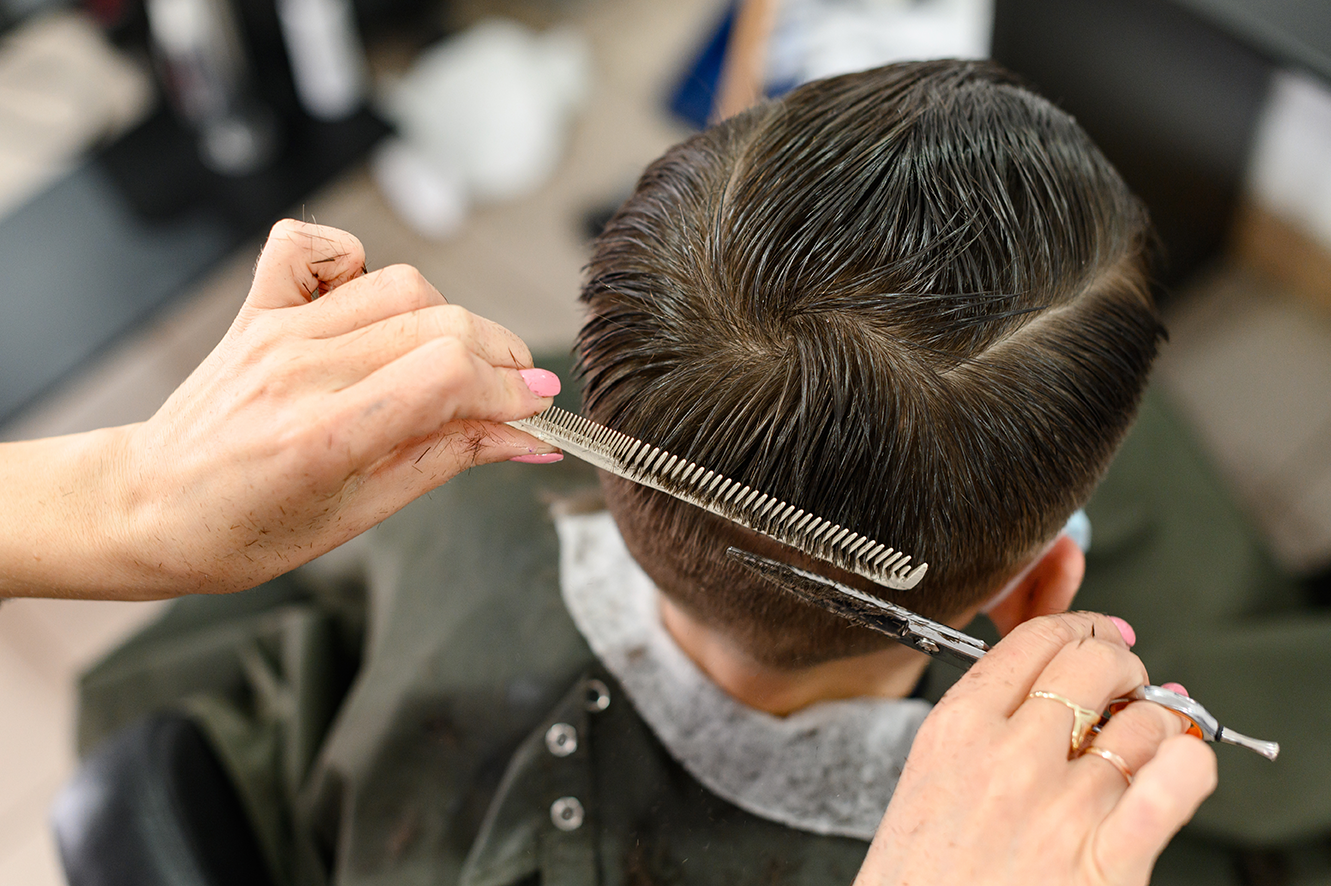School haircuts are in focus with a Sydney private school issuing a warning to parents that children with non-compliant cuts would have their hair trimmed on site.
Waverley College recently advised that students with mohawks, mullets, dreadlocks, buns or braids would be billed $20 and sent to a hairdresser stationed on-site for the first day of school. If they didn’t like it, they would be sent home.
“If your son arrives at the college at the commencement of term 2 with a haircut that is not in line with college policy, he will either be sent home on his first day or we will have a hairdresser on site where he can receive a haircut at the cost of $20, charged to his school fees account,” deputy principal Gabby Smith told parents.
“Waverley College’s uniform policy includes presentation standards such as appropriate hairstyles and just as many workplaces have expectations of presentation, we expect our students to adhere to a dress code that includes neat hair.
“Part of maturing in life is understanding that rules, guidelines, and expectations are necessary for growth – even when these might not align with our personal preferences. While personal expression, fun and creativity are important parts of who we all are as individuals, it needs to fit within the bounds of what is acceptable and required,” he said.
The mullet has been deemed an “extreme hairstyle” joining a list of other “non-acceptable” cuts that were outlined in the school’s uniform policy. Others include rat tails, mohawks, undercuts, tracks (shapes cut into the hair), mop tops, dreadlocks and cornrows.
It’s not the first-time mullets have made waves in national media. Last year, Wyong Christian Community School, Snowy Mountains Grammar School and Bathurst’s Scots All Saints College all warned students not to sport the iconic Aussie hairstyle. In 2020, a Perth teenager was refused entry at a pub because of his mullet, who later claimed it was discrimination.
Haircuts in private schools are no trivial matter. In 2018, the principal of the high-fee private school Trinity Grammar in Melbourne resigned after months of controversy that erupted when a deputy principal was sacked after he gave a student’s hair a trim ahead of a school photo. The haircut that roiled the school community was captured on a student’s smartphone.

Child psychologist Dr Michael Carr-Gregg has praised Waverley for introducing the hairdresser because it showed the school did not shy away from setting clear boundaries for students.
“Congratulations to Waverley for giving the students warning, and enforcing the rules in the policy,” he said. “The position they’re presenting to the customers, who are the parents, is that they have values, traditions and customs which distinguish ourselves from other schools.”
Australian private schools have traditionally had strict uniform policies that include rules about hair for boys and girls and teachers are often tasked with enforcing these rules in the face of disagreeable students and parents. At many schools, it’s not unusual for students to be sent home for haircuts and the hair rules in question can be quite subjective.
The latest rule has left many students and their parents annoyed, believing that the decision is based on image rather than the wellbeing or education of the boys.
A lot of parents are not happy the boys are not being supported to explore their individuality. For decades, whether it is mullets, mohawks, butterfly clips, hair braids or peroxided hair, hairstyles have often been the chosen method of self-expression for teens to express independence and as a process of experimentation to help them discover who they are. And what real harm has it done?
Obviously if one’s personal presentation poses a risk to individual safety or that of anyone else because of footwear or headwear being worn, the length of hair or hairstyle, one’s jewellery, fingernails or other adornments such as rings, studs or other things attached to your body, the principal should have the power to prevent you from participating in that activity – but let’s be real, how is a hairstyle going to affect one’s studies? A mullet hasn’t caused injury, nor has it created a health and safety risk in the classroom, and it won’t.
Should hairstyle choice play a part in education at all?
For many kids, hair style, cut and colour are paramount to their beliefs and identity. Enforcing rules that tell them that this is not acceptable or okay, especially to younger people, can be detrimental to their mental health and wellbeing because it essentially says, who they are is not acceptable or okay.
From repressing cultural identity and diversity to denying connection to sexual and/or gender identity and communities, banning hairstyles at school isn’t a decision without ramifications for the students it directly impacts.
Take the two South Sudanese students who in 2017 were banned from a Victorian school because they wore cornrows, which didn’t comply with their uniform policy. A similar event occurred in Mildura with a student of Nigerian heritage threatened with expulsion if he continued to wear his dreadlocks, something he said represented his heritage.
While in both situations the decision was reversed after backlash, anti-discriminatory debates were sparked and have been active ever since. As well as representing cultural identity, hair styles can also have significant to the LGBTQI community and identity of children who are part of that community.
Hair policies have always had controversy in countries that are not homogeneous. The reasoning for this is that there are many different types of hair and asking everyone to adhere to the same policies will inevitably be discriminatory.
Imagine being told that your natural hair is distracting, told your hair is too messy, told your hair in unprofessional. Imagine being told you should do damaging processes to your hair on a constant basis to “fit in”. Would you not grow to resent your appearance? Is it fair to ask everyone to conform to standards? Are you not inadvertently giving children the mindset that certain types of hair are bad, ugly, undesirable, unwanted? Are you not teaching those children that it’s okay to treat people differently because they don’t look like you?

The conversation about school hair is one that queries equality in schools; different cultural norms dictate what ‘neat’ hair looks like. Not all hair types/textures are going to suit the same styles, and gender norms are in-flux. So, while Australia argues about whether teachers should be vilified for cutting a student’s hair, perhaps the question we should be asking is whether they have to enforce ‘hair rules’ at all…
Is it okay that girls are allowed to have long or short hair, but boys’ hair must sit above the ear in most of these private school hair regulations? And how difficult is it for teachers to navigate these questions from students about rules they did not create.
As teachers, how do you feel about enforcing traditional school rules? Is this an issue that your school has already dealt with? Is there room here for School Councils to review some of the old school regulations that have been in place for decades?








